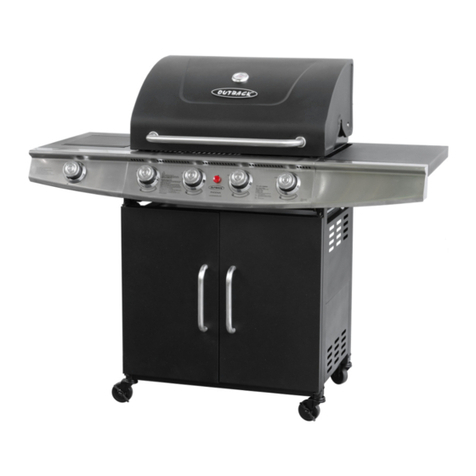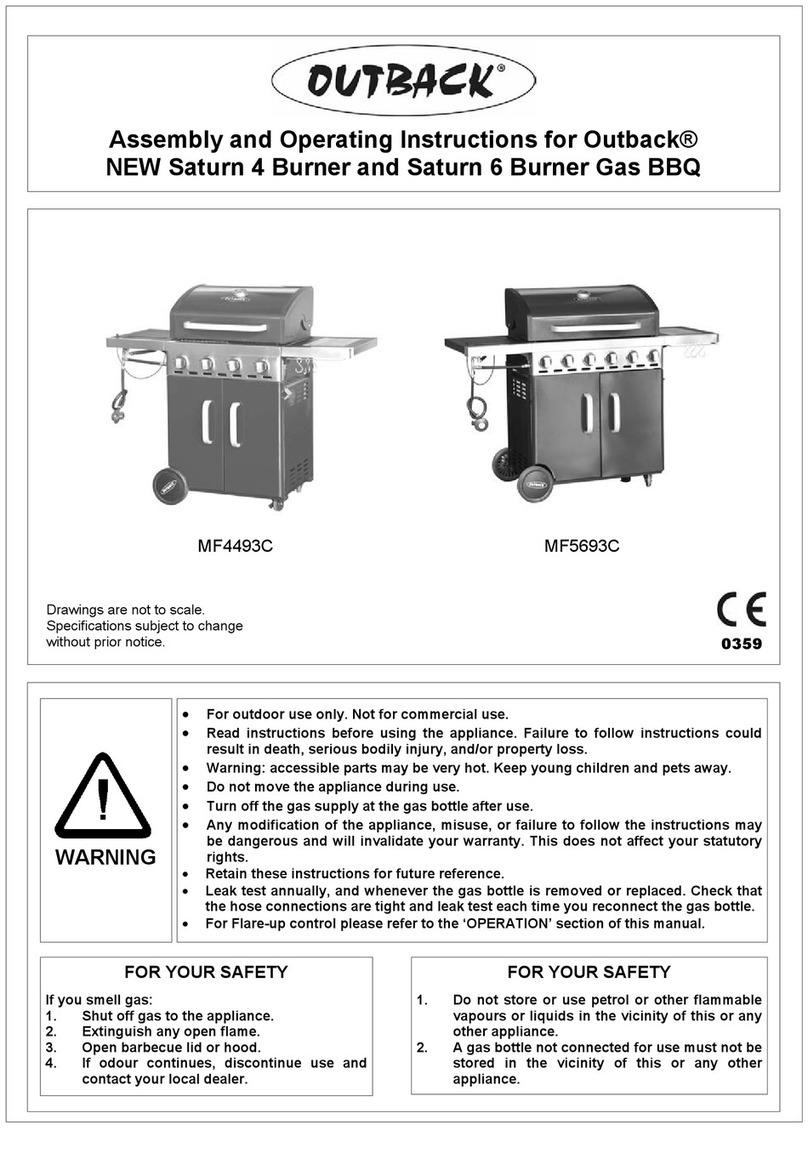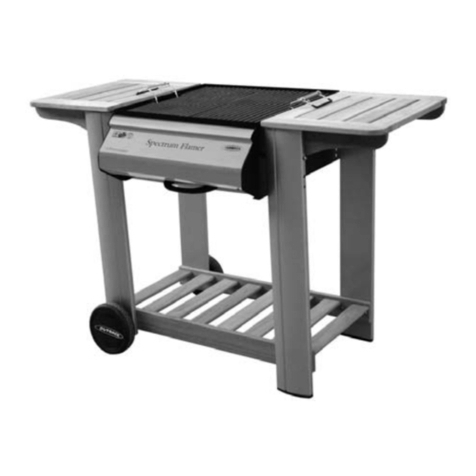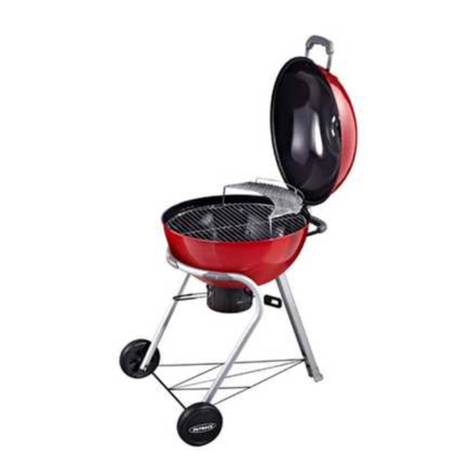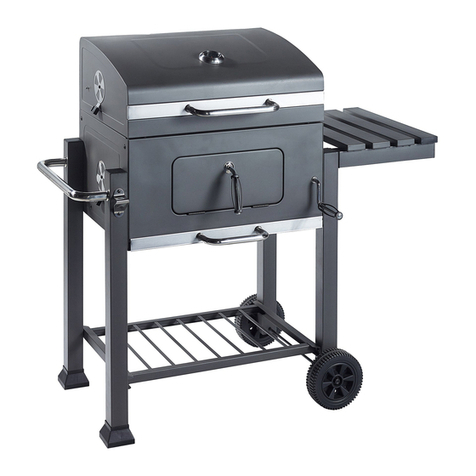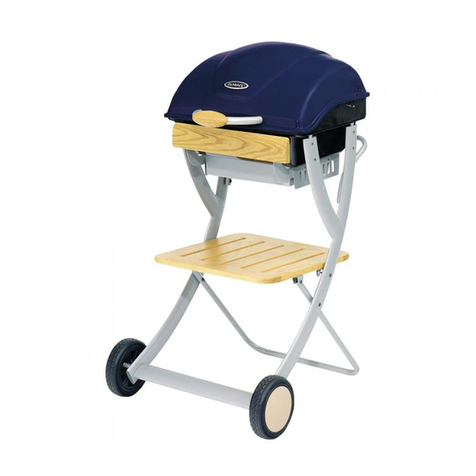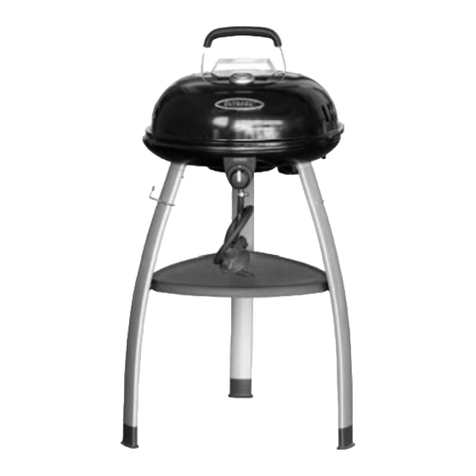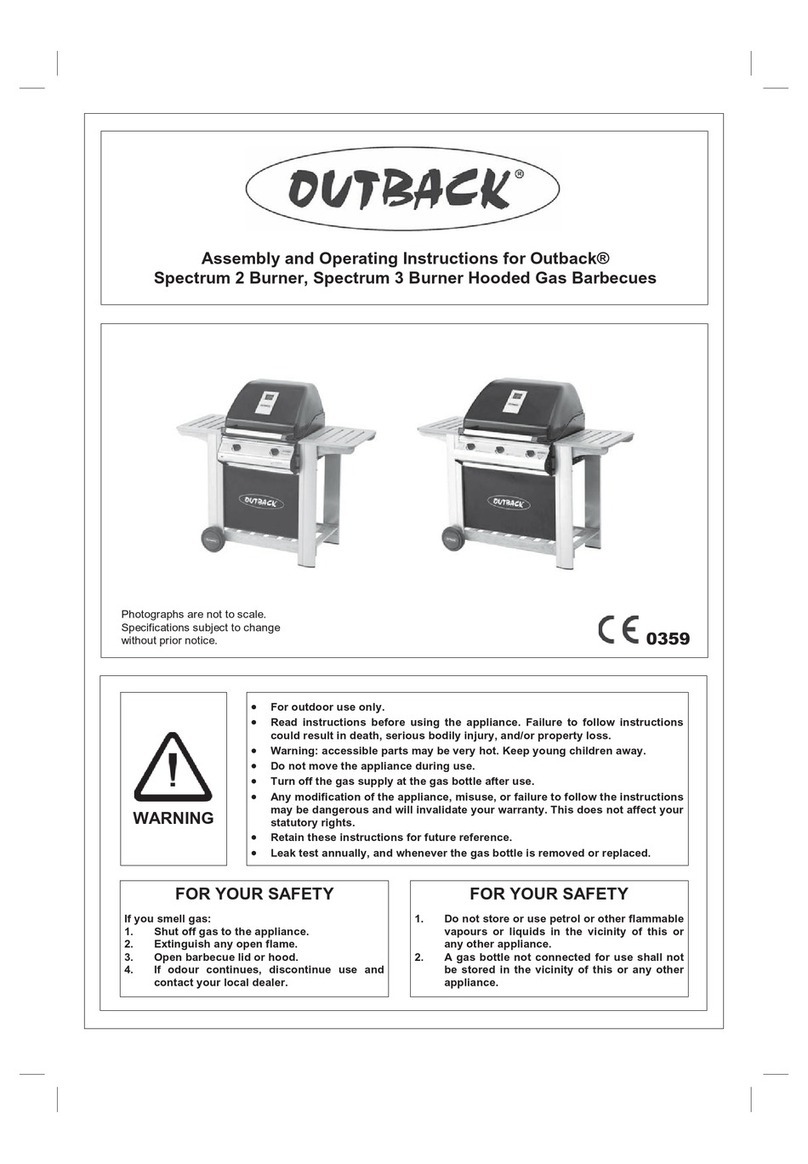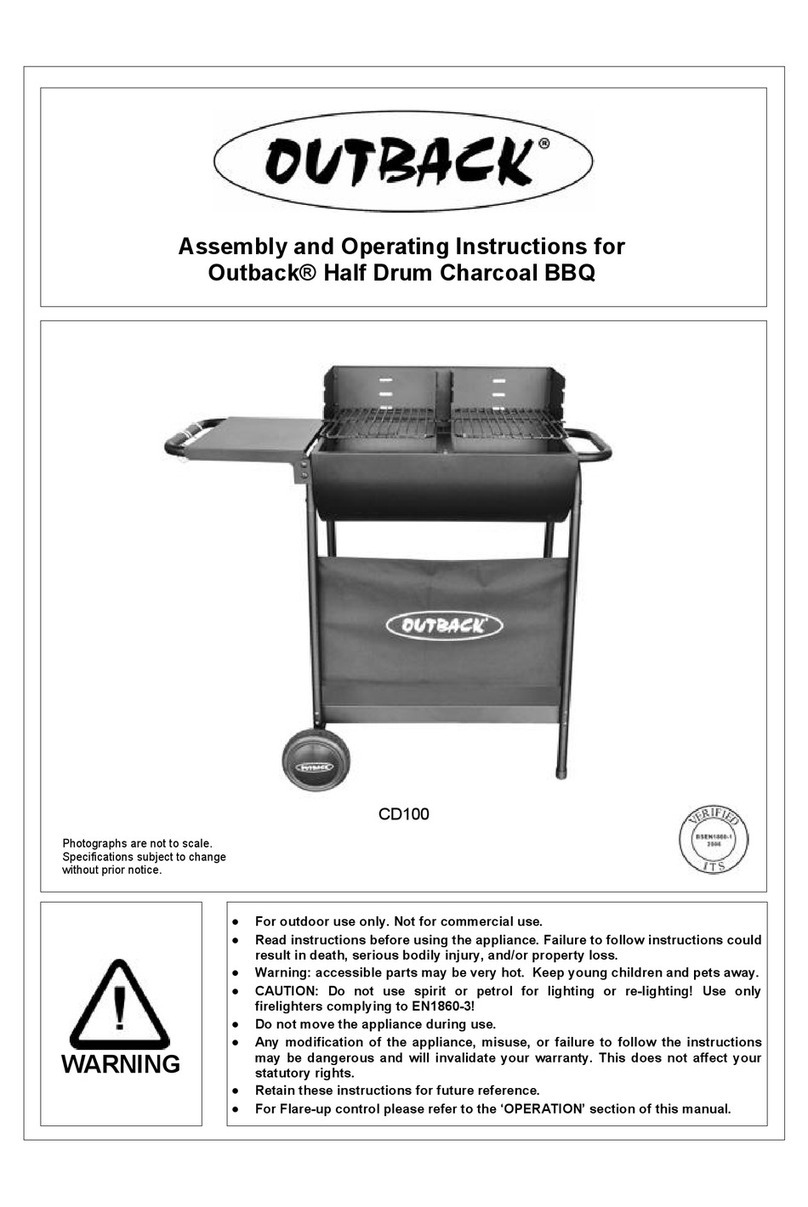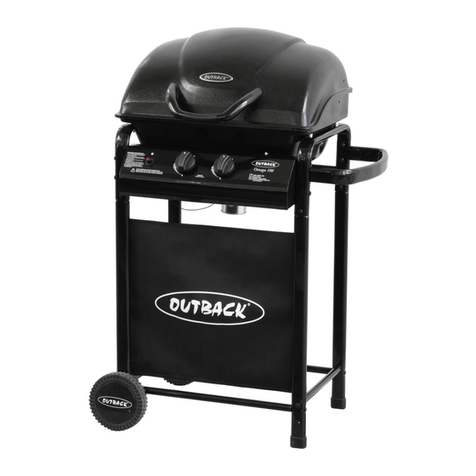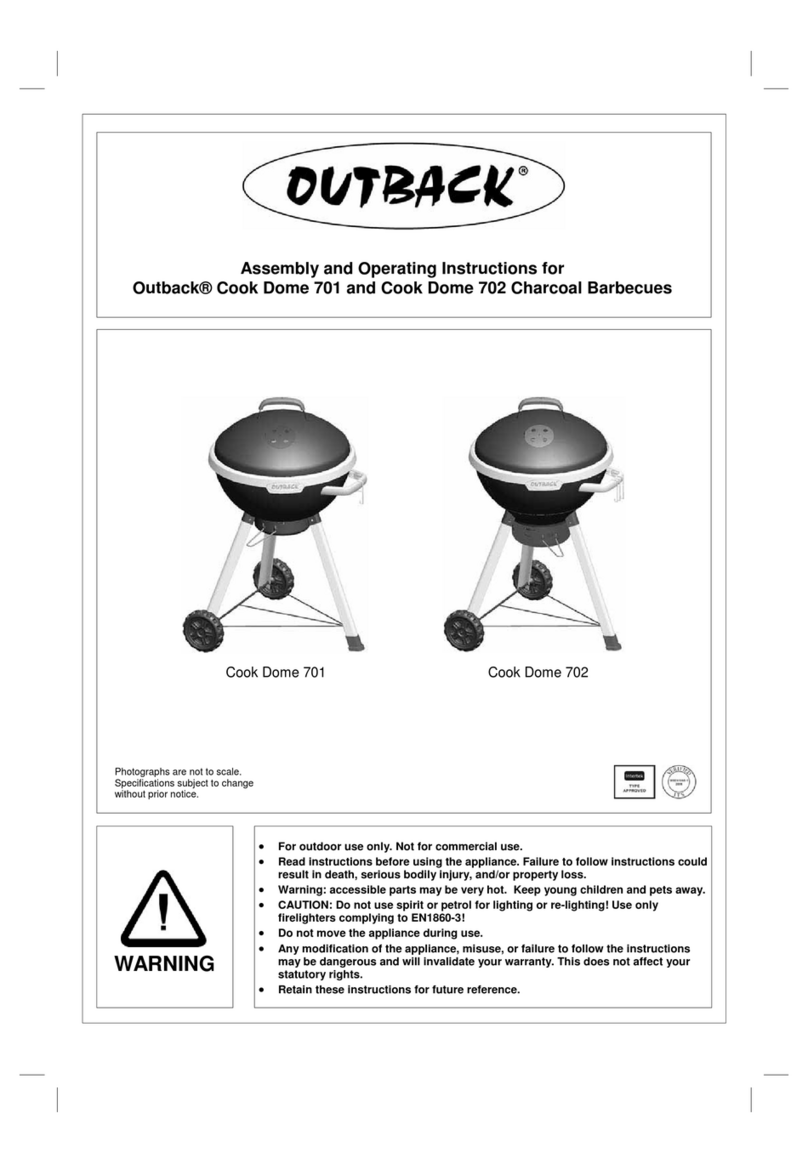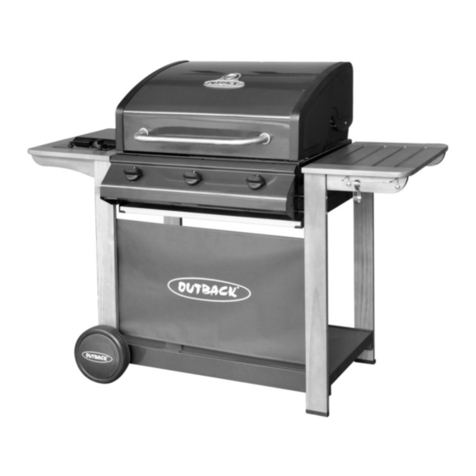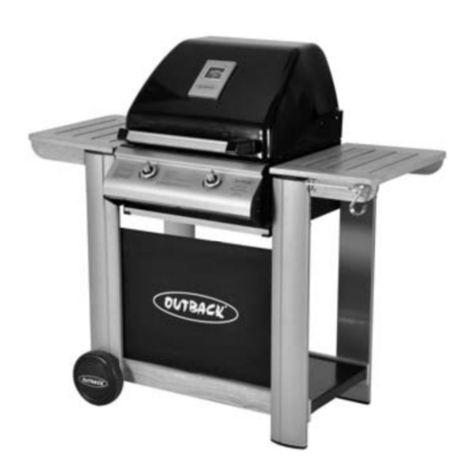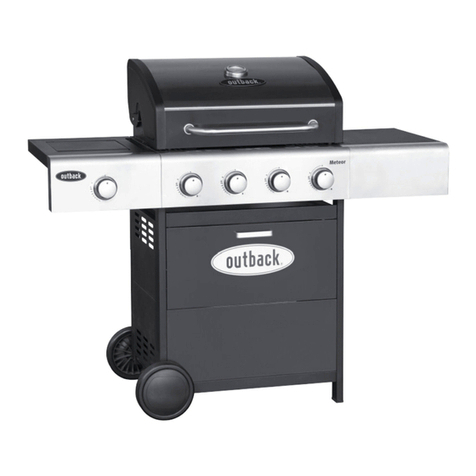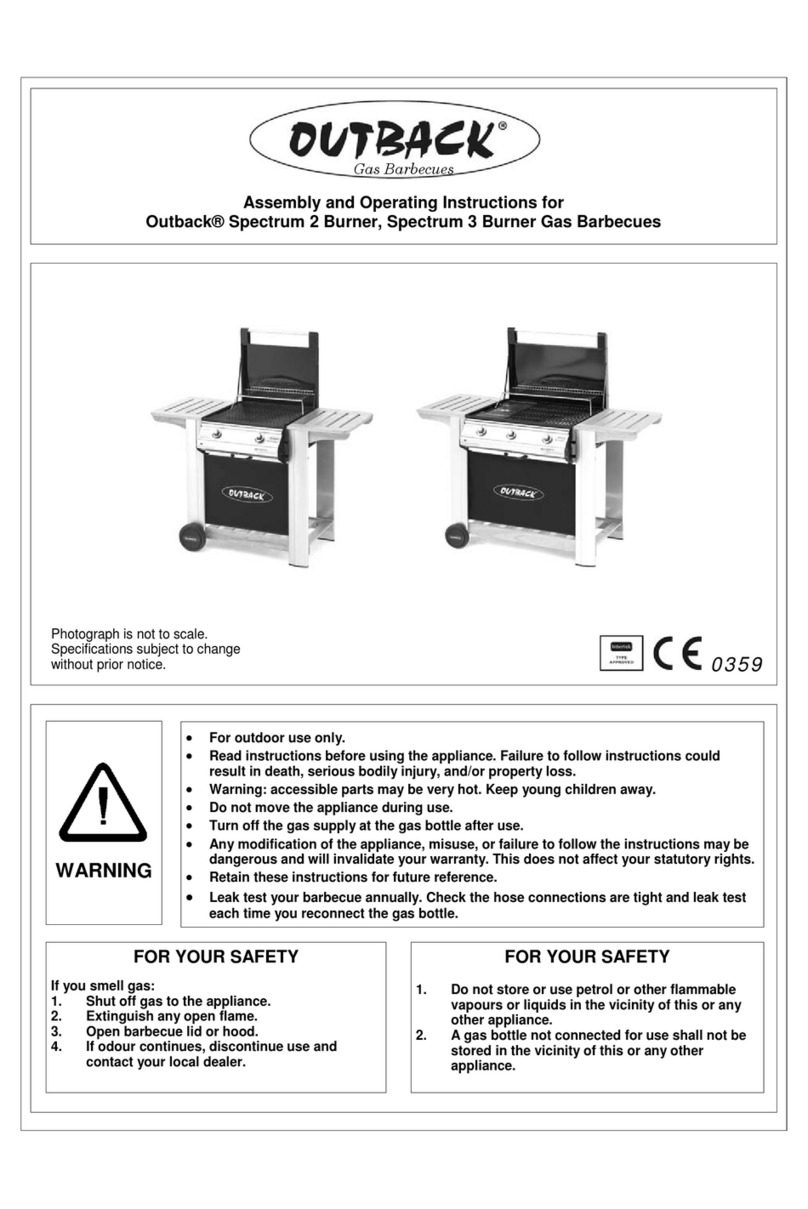10
5. Important Information
Please read these instructions carefully
before assembly and use of your barbecue.
nRetain these instructions for future
reference.
nThis product is for outdoors use only. Do
not use indoors.
nRemove plastic wrap from any part before
lighting.
nDo not use within 1m of any flammable
structure or surface. Do not use under any
combustible surface.
nOpen the barbecue hood or lid before
lighting.
nOnce lit, do not move the barbecue until it
has completely cooled, after use.
nThis barbecue must not be left unattended
when lit.
nThe hood or lid handle can become very
hot. Grip only the centre of the handle.
Always use oven gloves when cooking or
carrying out any adjustments to the
barbecue.
nAlways use the grill lifting handle and ash
tray / vent tool provided.
nUse purpose designed barbeque tools with
long, heat resistant handles.
nUse caution when opening the hood or lid,
as hot steam inside is released upon
opening.
nParts of this barbecue become very hot –
care must be taken, especially when
children, elderly people, and animals are
present.
nNever cover a barbecue until it has
completely cooled.
nUse this barbecue only on a stable, flat
surface.
nDo not store flammable materials near this
barbecue.
nDo not use aerosols near this barbecue.
nFailure to follow the manual’s instructions
could result in serious injury or damage.
nModification of the barbecue may be
dangerous, is not permitted and will nullify
any warranty.
nCAUTION! Do not use spirit or petrol for
lighting or re-lighting! Use only firelighters
complying to EN1860-3. Do not add starter
fluid to charcoal that is already alight.
nDo not use in high winds. Hot embers could
be blown out of the barbeque and cause
damage or serious injury.
nAlways place charcoal in the charcoal grill,
not the ash tray.
nEnsure the ash tray is in place before use.
nDo not move the cooking grill and charcoal
grill until after the appliance has completely
cooled down.
nNever remove the ash tray whilst the
barbecue is in use. Wait until the barbecue
is completely cooled before removing it.
nIf you have any queries regarding these
instructions, contact your local dealer.
6. Installation
6.1. Selecting a Location
This barbecue is for outdoor use only and
should be placed in a well-ventilated area, and
on a safe and even surface. Never place your
barbecue below ground level. Take care to
ensure that it is not placed UNDER any
combustible surface. The sides of the
barbecue should NEVER be closer than 1
metre from any combustible surface, including
trees and fences and that there are no heat
sources near the barbecue (cigarettes, open
flames, spark etc.). Keep this barbecue away
from any flammable materials!
6.2. Precautions
Do not obstruct any ventilation openings in the
barbecue body.
7. Operation
7.1. Warnings
nBefore proceeding, make certain that you
understand the IMPORTANT
INFORMATION section of this manual.
nYour barbecue is not designed to be used
with any part of the cooking area as a solid
plate — this includes baking dishes. Full
coverage will cause excessive build-up of
heat and damage the barbecue. This is not
covered by warranty.
• This barbecue is designed for charcoal use
only. It is not designed to be used with lump
wood charcoal, including lump wood based
lighting bags, as it burns too quickly. We
recommend the use of charcoal briquettes.
